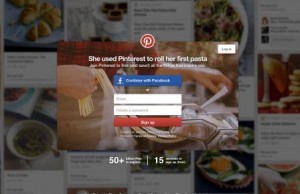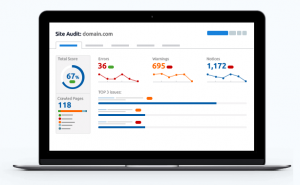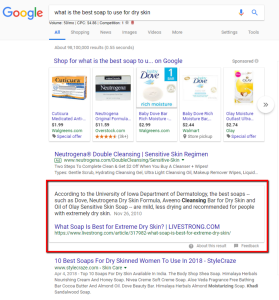
There’s been a lot of conversation in the world of SEO over the years about “aged domains”—the idea that Google sees domains that have been around for longer as more trustworthy.
Even if that were a moot point, it’s true that websites with a bit of a history behind them have certain advantages that new websites do not. If they’ve been publishing new content on a regular basis, generating backlinks, building a social media following and email subscribership, and creating industry connections, it stands to reason they’re miles ahead of where you are.
But this doesn’t mean there isn’t hope for a new website. Here’s how to increase website traffic to your site, even if it’s brand new.
Document Your Strategy
Your written strategy needs to be a living, breathing document that’s updated as you continue to monitor how you’re progressing in your marketing efforts. But that doesn’t excuse you from not writing it down.
We’ll talk about tactics in a moment, but we’d encourage you to develop a simple and easy-to-follow plan for your team. This will keep your marketing message consistent across different channels and give you more cohesion overall.
As you might have heard before, all airplane flights are off-course 99.9 percent of the time. It’s through constant course correction that they can safely arrive at their destination. So knowing where you’re going and a willingness to adjust your course is key to your success.
Tactic No. 1: Do Your Keyword Research
With a new website URL, you’ll be starting from scratch. You won’t have any existing data to analyze and build your keyword strategy around.
Naturally, you’ll be examining relevant industry keywords, but since your process isn’t refined yet (unless you’re an SEO guru), you’re likely to wind up with a list of highly competitive keywords everyone else is targeting. What’s one to do?
Try spying on your competition using tools like SpyFu or SEMrush. Just because they’ve been around longer doesn’t mean they know what they’re doing, or that there aren’t certain inefficiencies for you to exploit. Have a look at five of your competitors; see what they’re ranking for organically and what keywords they’re bidding on. This should give you a good starting point.
Keyword ideas can also come from studying your audience. You can examine their social profiles (Facebook, LinkedIn, Pinterest boards, etc.) or forum posts using Google Keyword Planner, which could help you uncover ideas you haven’t even thought of.
Tactic No. 2: Guest Blog
Guest posting has many benefits. It gives you a way to get in front of your target audience, build backlinks and drive traffic to your website. You can also send readers to a landing page on your site to convert them into email subscribers.
Here are several things to keep in mind as you look to contribute to various blogs.
- Find the right blogs to guest post on. Go where your target audience is. If you can’t immediately find traction with larger, more popular blogs, then start with blogs that aren’t quite as prominent, and their requirements shouldn’t be as stringent.
- Create compelling content. No editor is going to accept low-quality content in the first place—especially if they’re keeping up with SEO best practices. Develop high-quality, relevant content because this will drive more traffic to your site, lead to more email subscribers and create a better reputation and long-term relationship with the blog owner.
- Include links back to your site. Check with the editor or content manager to see what their guest posting requirements are (if they aren’t already available on-site). If you can’t include a link to your site in the body of the content, take advantage of the author byline.
Tactic No. 3: Advertise
SEO and content marketing are two strategies that pay off over the long haul. But as an owner of a new website, you can’t expect the work you put in today to deliver results overnight.
Meanwhile, advertising is more like a tap. You turn it on, and the water begins to flow. And in this case, the water is traffic.
To get the best results from your ads, some testing will be necessary. As you monitor your stats and find opportunities to tweak your ads (for example, when they are shown, the locations where they are shown), you can boost their overall effectiveness.
Per HubSpot, 54 percent of users don’t click banner ads because they don’t trust them. But they also found that users who are retargeted to are 70 percent more likely to convert.
What this means is when you do your ads right, you can expect favorable results. But if you don’t put in the time and effort necessary to adjust as you go, your advertising budget could easily be wasted on leads that aren’t well-matched to your offer.
Leverage paid search, social media advertising and display advertising to increase traffic to your site.
Tactic No. 4: Build Your Social Media Following
As with content marketing, building an email list or SEO, growing your social following can take time. Fortunately, it may not take as much time as other methods to increase brand visibility and traffic to your site.
According to HubSpot, 83 percent of all marketers actively pursue social media marketing initiatives. When you consider that at least 61 percent of those investing a minimum of six hours per week in social media marketing saw improvements in search rankings, it’s not hard to see why.
Some of the most popular social media sites include Facebook, Twitter, Instagram, LinkedIn, Snapchat and Pinterest. Rather than spreading yourself thin and promoting everywhere (though you should register your brand name with every social network in case you need it later), it’s best to find traction with one or two sites before you branch out and add more to your marketing plate.
Share useful tips, quotes and links to your content on social, and soon you’ll see people coming to your site from social media.
Tactic No. 5: Grow Your Email List
We’ve already talked a little bit about getting people to subscribe to your email list. Since these people are opting in to receive regular communication from you, it’s likely they are your most loyal and engaged followers, and have the potential to become your most valuable source of traffic, too.
Per HubSpot, three-quarters of companies agree that email offers “excellent” to “good” ROI.
In some ways, it’s getting harder for businesses to get people to subscribe to their newsletter. An opt-in box in the sidebar may generate some subscribers. A generic, catch-all eBook or whitepaper offer might get a bit of interest.
But there has never been a greater need to tailor your free content offers to individual website visitors. With content upgrades (relevant assets your visitors want), you can significantly increase conversions. For instance, if you’re running a podcast, you can make your transcription a downloadable PDF. Since the offer is highly relevant and targeted to the listener, they are more likely to opt in.
Get Your Site On the Map
Just because you don’t have an aged domain doesn’t mean you can’t earn your fair share of traffic. But don’t expect it to come to you without any work. Build industry connections, create quality content and add value to your website visitors.
Business & Finance Articles on Business 2 Community
(64)





